- Home
- Don Pendleton
Thermal Thursday Page 9
Thermal Thursday Read online
Page 9
“Oh yes. It is the scouring action of the water which produces the cavity. Had the water level dropped at some point, say, five hundred years ago, then the cavity would not have been allowed to expand to the surface elevation. And we would never have learned of the formation. Unless, of course, someone began mining operations hereabouts. Many subterranean formations are discovered in that manner.”
Brognola scratched his nose and commented, “You’re saying that there could be entire networks of formations like this that we’d never know about.”
“I’m saying that there are.”
“Uh huh.” Brognola thoughtfully pulled at his nose. “Well tell me, gentlemen—what the hell good is something like this?”
Washburn only grinned at his response to the question.
After a moment, Cardinez replied, “It’s a dynamic planet, Mr. Brognola.”
“No, I mean from the human standpoint. Let me correct that: from the greed standpoint. What good is it?”
Washburn said, “If I owned that land, I’d put glass-bottom boats on the lake for the casual tourist and rent scuba gear for the diving enthusiasts. It’s a wonderland down there. And the water is crystal clear.”
“Think like a hood, though,” Brognola persisted.
“You mean, some illegal use,” Cardinez said drily.
“With great profit potentials, yes.”
The archeologist replied, “If you’re thinking of buried treasure or some such nonsense, forget it. Natural wonders you will find in those waters, yes, but that is all. I agree with Washburn. It would make a tremendous tourist attraction. But God, it would cost a fortune to develop it. Now, you could think along those lines. And I believe it would be a relatively safe investment. Over the long run, the return should be quite respectable.”
“I’m talking about disrespectful people,” Brognola grunted.
Washburn said, “Are we talking about things like organized crime?”
“Yeah.”
“Well it has been common knowledge for years that organized crime elements are fairly well entrenched in this state. And I understand that they sometimes diversify into legitimate business ventures. This would be an excellent way to invest ill-gotten gains.”
Brognola growled, “Maybe so.”
It was at this point that the prodical son returned. A marshal poked his head into the vehicle, caught Brognola’s eye, and mouthed a single inaudible word: “Striker.”
The head fed excused himself and went outside.
A Ford Mustang had penetrated the circle of official vehicles and was parked in the shadow of Bolan’s fabulous warwagon, the GMC motor-home which the guy had converted into a rolling dreadnought.
Jack Grimaldi was behind the wheel of the Mustang, jawing easily with a marshal who was leaning into the open window.
Brognola paused for a quick word with the pilot. “Is he okay?”
“That guy? Hell, he’s in better shape than I am. And all I’ve done is sit and wait.”
Brognola squeezed the pilot’s hand and went into the motorhome. He should have knocked before entering. Striker and Brognola’s star female recruit were wrapped up in an impassioned embrace just inside the hatch.
The head fed harrumphed and squeezed past the couple to take a seat in the war room.
“Any time you’re ready, people,” he said quietly, after a moment.
April came out of the clinch with dancing eyes and a scarlet face. Striker took a moment to compose himself. He lit a cigarette then took the girl by the hand and steered her to a seat. Then he grinned and shook Brognola’s hand.
There had been, yeah, a brief tension there. It was a normal characteristic of the strange relationship between the two men. Stout friends from almost the beginning … but a persistently strained friendship. Brognola understood the nature of the strain. Between people of such diverse paths, the strain went with the territory.
“How’d it go?” he casually asked the big guy.
“It went okay,” said Striker in characteristic understatement. “Do you have Riappi?”
Brognola nodded solemnly. “Kicking and screaming about his constitutional rights, but we’ve got him. He’s in the club van.”
The club van was a jailhouse on wheels.
The Striker grinned and said, “Wants to be charged, eh?”
“Yeah.”
“For starters, then, hit him with kidnapping and illegal detention.”
“That’s what he wants to hit me with,” Brognola growled humorously. “Who’d he kidnap?”
“One William O. Kessler and about a hundred John Does. His devil crews have been taking prisoners for slave labor. Kessler happens to be a cop. He could make your case. And that’s just for starters.”
“What the hell is going on, Striker?” Brognola asked soberly. “What’s all this devil’s island stuff?”
Bolan smiled solemnly and reached behind Brognola to produce a fat cardboard tube. He withdrew from it a roll of engineering drawings and spread them on the floor at Brognola’s feet. From the top drawing, the chief fed instantly recognized the lopsided hourglass sketched by Cardinez but this one was much more professionally drawn, much more involved, and minutely detailed.
“Son of a bitch,” Brognola breathed, forgetting himself in front of the lady. “What the hell are they doing out there?”
Bolan fanned the drawings and selected one from the center of the stack. “Take a look at this,” he said, “then ask what they’re doing.”
But Brognola could not ask.
He could not immediately believe, even.
Nor could Bolan, obviously.
“What do you make of it?” Brognola asked the big guy, after a silent study of the incredible evidence.
“That’s for a better head than mine to say,” Bolan replied quietly. “I’m just a soldier. But I’d have to call it foreign relations.”
So would Brognola. But, like Bolan, he’d like to refer the matter to better heads. “Someone I want you to meet,” he muttered. “Put on some dark glasses or something. We’re taking this to a higher court.”
“It will have to be a quick trip,” Bolan warned. “I’ve got a fire mission and it won’t keep.”
But it would.
If this evidence meant what it seemed to mean, anything else would keep … indefinitely. Any damned thing else.
15
EXPERT OPINION
If one could believe the evidence, it appeared that the engineers at Satan’s Hammock were working on a network of subterranean conduits which extended well beyond the North American mainland to incredible distances.
Three major routes had been painstakingly mapped on an oceanographic chart of the region. The shortest of these angled off in a generally easterly direction to pass beneath Biscayne Bay, just south of Miami, terminating near Andros Island on the Great Bahama Bank.
Another proceeded due south from Satan’s Hammock, running beneath Everglade’s National Park and Florida Bay, passing the Keys of Islamorada and continuing through Cuba to a terminus at the island of Jamaica in the Caribbean.
The third branched off from the Jamaican conduit just north of Havana to proceed westerly along offshore Cuba to a point on the Yucatan Peninsula of Mexico.
The three routes were marked, perhaps facetiously, “Bahama Boulevard,” “Jamaica Drive,” and “Yucatan Avenue.”
“It is not as incredible as it may seem,” said the geologist. “The flat limestone bedrock which forms the spine of Florida extends well into the Greater Antilles. In fact, you could think of it as a single, continuous platform upon which nature has constructed the entire peninsula of Florida and most of the islands between here and Venezuela.”
“What do you mean by platform?” Brognola inquired, rather irritably. “I’ve never really studied geology but it has always been my understanding that the continents and the seabeds are different animals entirely.”
Washburn smiled faintly as he replied, “I have spent my entire life in the stu
dy of geology, Mr. Brognola, and I discover new marvels every day. Certainly there is no way to condense a lifetime study into a few simple phrases which will give you the same understanding that I have. But let me assure you that the phenomena which you are now contemplating are usually associated with the laying down of limestone. Now limestones of this nature are relatively modern rocks, in the geological sense. They are formed principally by complex interactions between biological organisms and sand. What is now the peninsula of Florida was, in recent geological time, a shallow sea separating the Gulf of Mexico from the Atlantic Ocean. Deposition of tiny biological debris upon the sands of this shallow sea formed the limestone bedrock. I’m putting this very generally, very roughly, understand, for the sake of brevity. But over the eons a skeletal structure of bedrock was formed, upon which was later impressed the soils and other detritus from the Appalachians. The final result is the state of Florida as we know it today. But, now, ocean currents played a large role in that formation. Although the supporting bedrock extends for hundreds of miles below the Straits of Florida, the natural currents discouraged the landbuilding processes at that point. What then occurred beyond the Straits of Florida can be seen as a discontinuous process which resulted in the island chains of the Antilles. At one time, I may add, Florida itself was such a discontinuous chain of small islands. Which is why I say that you could view the entire development as being mounted upon a single platform.”
During that discourse, Bolan had been studying the oceanographic map upon which the routes had been traced. And he now had a question for the geologist. “Are we talking about the continental shelf?”
“In this particular area, yes, more or less.” The geologist traced the outline on the map with his finger. “You will note that the shelf is virtually continuous between North and South America. Politically they may be two continents. Geologically, they are one. And it should be fairly obvious that at one time the north coast of Venezuela was fitted rather snugly to North America in what is now called the Gulf of Mexico. The important element, however, for this discussion, lies in the grand circle of islands called the West Indies, which forms the eastern boundary of the Caribbean Sea—and which are actually vestigial remnants of what was once the eastern shelf of the supercontinent, America, in those latitudes.”
Bolan said, “So the Yucatan connection is valid, also.”
Washburn replied, “Understand, I am not certifying as to the validity of any of this. I am merely providing the expert opinion as to the possibility that these conduits could exist. But I am not an oceanographer and I have not kept abreast of the many burgeoning studies now being conducted in these areas. If you will look at the sea chart, however, you will note that the Yucatan Channel separating Cuba from the eastern prominence of Yucatan is shown as a rather chaotic area. There are both trenches and rises in that channel. But very shallow water covers much of the Yucatan offshore zones. I would be not at all surprised to learn that a continuous limestone shelf underlies the Yucatan Channel.”
“Good lord!” Brognola exploded. “This just blows too damned much of the mind! Do you people realize that we are talking about hundreds upon hundreds of miles of … of …”
Washburn quietly said, “Roughly five hundred miles to Jamaica, yes, as the crow flies.”
“But that’s ridiculous! Five hundred damned miles of caves? I’ve never … this is just …”
Cardinez thoughtfully stroked his chin and told the sputtering official, “The wonders of man have nowhere begun to approach the natural wonders of our environment. We speak of the solid earth and all that mechanistic nonsense but the hard truth is that we occupy a phenomenal and dynamic planet which the puny hand of man could never subdue. I was thinking …” He angled a sidewise glance at the geologist. “Who was that fellow, George?—came down a few years ago from—remember, he’d been researching the New River Cave in Virginia?”
Washburn replied, “The speleologist, you mean. Cave hydrology was his specialty, wasn’t it?”
“I believe so, yes. Now why can’t I think of his name? Had all these passionate ideas about continental linkage via water dynamics.” The archeologist fixed Brognola with a thoughtful stare. “This is the expert you should be talking to. Fellow spent several months on our campus thoroughly researching every scrap of information on peninsular dynamics.” He turned back to the geologist. “Was it Williams?—Williamson?”
“Something like that, yes. Come to think of it, wasn’t he interested in Satan’s Hammock?”
“Oh yes, and all of our underground phenomena. A very curious fellow, not too socially minded, forever had his nose buried in a—” Bolan interrupted, “Man in his early fifties?—stocky build, red face?”
“Why yes, I …”
Bolan sighed. “The name is Anderson.”
“Yes! Paul Anderson. You’ve already spoken to him, then.”
“But not nearly enough,” Bolan replied stonily. He signaled Brognola with the eyes and huddled with him out of earshot from the others. “Anderson’s our man,” he reported quietly. “He’s running that show, over there. And he has direct linkage with the Santelli headshed.”
“Then it’s for real,” Brognola replied worriedly. “How the hell do you read this, Striker? What do they hope to gain from all this?”
“Let’s talk some more with the experts,” Bolan suggested. He returned to the conference table and reshuffled the drawings, placing the “hell hole” artwork on the top of the stack. It was a cross-sectional representation of the caverns at Satan’s Hammock, appropriately colored to distinguish between air chambers and water chambers.
“This really is remarkable,” said Cardinez, eyeing the drawing. “I have been there many times. I knew that horizontal cavities existed near the base of the cenote and I suspected the presence of other large chambers … but I had no idea that anything such as this …”
The drawing depicted the two primary chambers side by side. The north chamber was the dry hole, in which the construction was taking place. The south chamber was the water-filled cavern underlying the lake. In cross-section, many horizontal conduits traversed the site at various levels and in varying sizes. Several of the larger conduits were represented as passing directly through the dry chamber.
“You can see what they’ve done, here,” said Washburn, indicating several points on the drawing. “Initially both chambers were water-filled. They’ve established a diversion system and pumped the water out of the north chamber. In effect, what we have here, now, is a viable portal into an underground river. It looks like a workable system.”
“What do you mean by a viable portal?” Brognola asked.
“Think of it as an underground riverport,” Washburn explained. “What they are constructing down there is the rough equivalent of a lock and dam system. They are establishing ingress/egress for an underground river.”
“Now wait a minute,” said the head fed, the voice once again edging into an incredulous register. “I thought we were talking about caves. Now you’re saying underground rivers.”
“We’ve been saying it all along,” Washburn said drily. “Sorry, I thought you understood that. That is what is represented on the oceanographic map we were just studying.”
Very quietly, Bolan said, “But don’t leap to any early conclusions, Hal.” He was thinking of the monorail tunnel linking the two islands but did not wish to mention it publicly. “If those guys are pumping water, then they could be building a four-lane highway down there, for all we know.”
But Washburn vigorously shook his head in negation of that idea. “I strongly doubt that. If the mapping is accurate—that is, if it is a valid trace—then it would suggest the presence of deep-lying continuous faults traversing the entire length of the limestone shelf, through which surface water is being abducted from the North American continent to rises at the southern extremities. And if this pictograph is accurate …” he thumbed the cross-sectional, “… then I would have to say that these solution conduit
s—which would follow the fault lines—are quite sizeable and are no doubt moving huge volumes of water.”
“Wouldn’t there be seasonal variations?” Bolan asked, recalling something that Pip the Boss had told him.
“To a degree, yes. And the flow could be controlled, to a degree, by this magnificent installation they’re putting in there … but … highways beneath the Caribbean? I doubt that.”
Bolan thought about it for a moment then said, “Doctor Washburn, I’ve been in that hole. These doors …” he tapped the drawing with a finger, “… are larger than this trailer. As a rough estimate, I’d say they are at least twenty-five feet in diameter. Some of them may be larger than that. Considering a channel of water that large, and assuming that the entire channel—pardon me, you called it a conduit—assuming that the conduit is running at full capacity, wouldn’t it be a hell of an engineering feat to shut that flow down?”
“Absolutely,” Washburn smiled soberly. “And despite what my distinguished colleague here may have to say about the matter, the puny hand of man has indeed gone a long way toward subduing the rampaging wonders of nature. It could be done. It has been done.”
“It still sounds like baloney to me,” opined Brognola.
The grinning geologist said, “That’s what they said about Hoover Dam … and Aswan and all the others … before they were built.”
“Yeah,” Brognola harrumphed, “… but an underground river. Anyway, how would they know where those damned things come out? And just because they’re twenty-five feet across at Satan’s Hammock doesn’t mean they stay that big.”
“That’s right,” Washburn said. “But if you will look at the oceanographic study, the routes traced indicate a more or less constant dimension except for zones of considerable temporary expansion.”
“But how could they know that?” Brognola growled.
“Perhaps through physical exploration.”
Cardinez laughed nervously. “Not by one such as I,” he said.
Bolan suggested, “But maybe by someone with passionate interest?”
“Such as Paul Anderson,” Washburn said quietly.

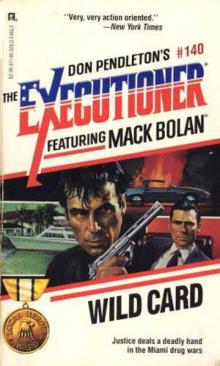 Wild Card
Wild Card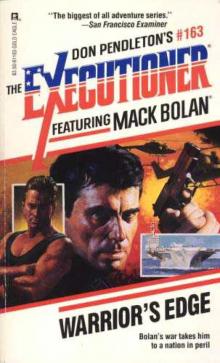 Warrior's Edge
Warrior's Edge Blood Vortex
Blood Vortex Lethal Vengeance
Lethal Vengeance Killing Kings
Killing Kings Cold Fury
Cold Fury Righteous Fear
Righteous Fear Cyberthreat
Cyberthreat Stealth Assassin
Stealth Assassin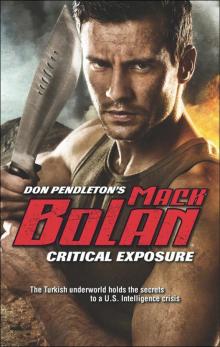 Critical Exposure
Critical Exposure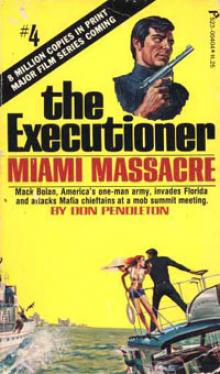 Miami Massacre te-4
Miami Massacre te-4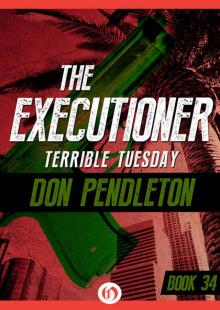 Terrible Tuesday
Terrible Tuesday Dying Art
Dying Art Jungle Hunt
Jungle Hunt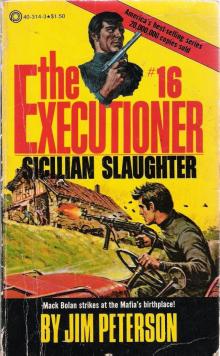 Sicilian Slaughter
Sicilian Slaughter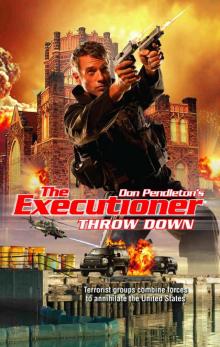 Throw Down
Throw Down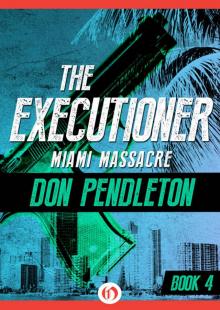 Miami Massacre
Miami Massacre Sudden Death
Sudden Death Panic in Philly
Panic in Philly Savage Fire
Savage Fire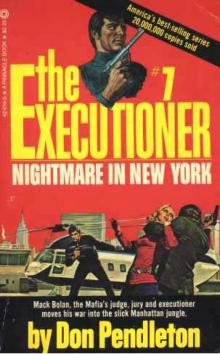 Nightmare in New York te-7
Nightmare in New York te-7 Omega Cult
Omega Cult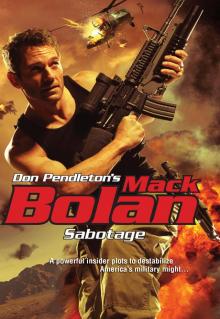 Sabotage
Sabotage Viral Siege
Viral Siege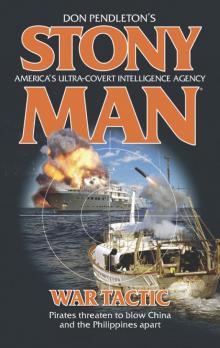 War Tactic
War Tactic Thunder Down Under
Thunder Down Under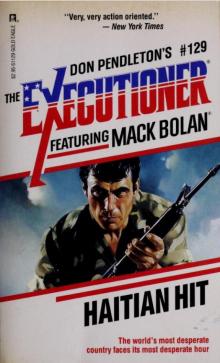 Haitian Hit
Haitian Hit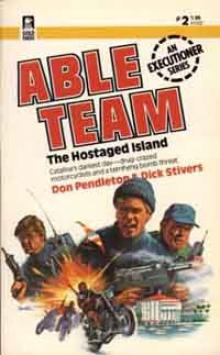 The Hostaged Island at-2
The Hostaged Island at-2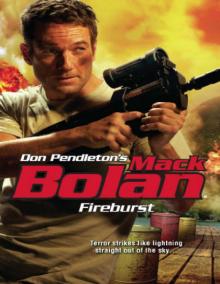 Fireburst
Fireburst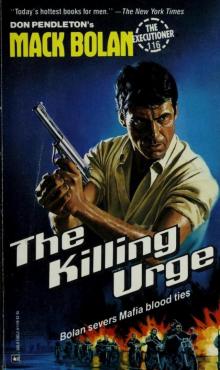 The Killing Urge
The Killing Urge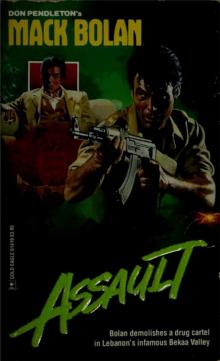 Assault
Assault Ashes To Ashes: Ashton Ford, Psychic Detective
Ashes To Ashes: Ashton Ford, Psychic Detective Flight 741
Flight 741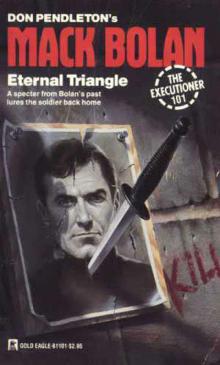 Eternal Triangle
Eternal Triangle Frontier Fury
Frontier Fury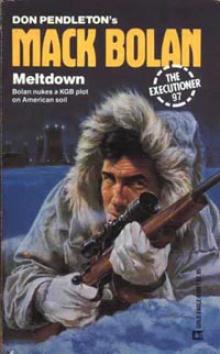 Meltdown te-97
Meltdown te-97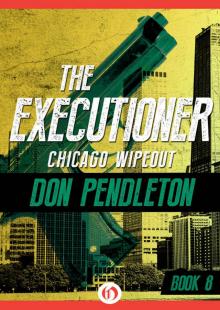 Chicago Wipeout
Chicago Wipeout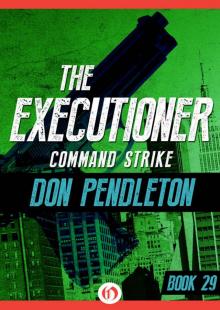 Command Strike
Command Strike Nightmare Army
Nightmare Army Ivory Wave
Ivory Wave Combat Machines
Combat Machines Silent Threat
Silent Threat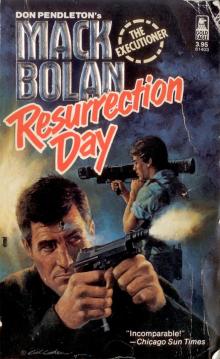 Resurrection Day
Resurrection Day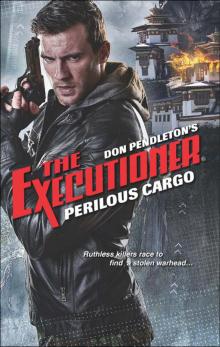 Perilous Cargo
Perilous Cargo Syrian Rescue
Syrian Rescue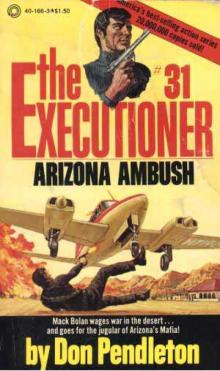 Arizona Ambush te-31
Arizona Ambush te-31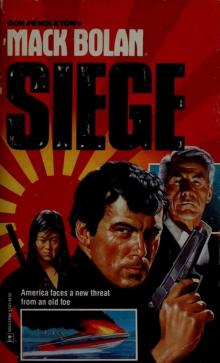 Siege
Siege Line of Honor
Line of Honor Lethal Risk
Lethal Risk Blood Testament te-100
Blood Testament te-100 Soviet Specter
Soviet Specter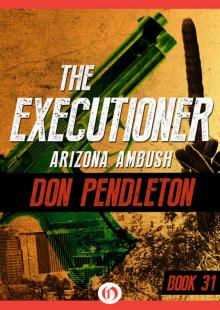 Arizona Ambush
Arizona Ambush Fatal Prescription
Fatal Prescription Deep Recon
Deep Recon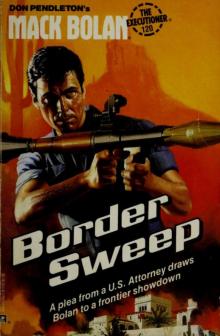 Border Sweep
Border Sweep Life to Life
Life to Life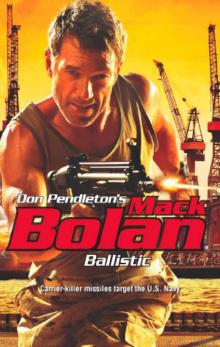 Ballistic
Ballistic Hellbinder
Hellbinder Time to Time: Ashton Ford, Psychic Detective (Ashton Ford Series Book 6)
Time to Time: Ashton Ford, Psychic Detective (Ashton Ford Series Book 6) The Violent Streets te-41
The Violent Streets te-41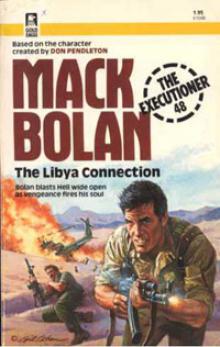 The Libya Connection te-48
The Libya Connection te-48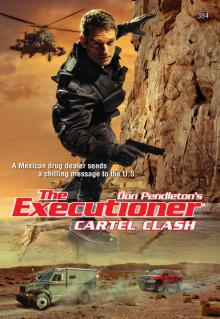 Cartel Clash
Cartel Clash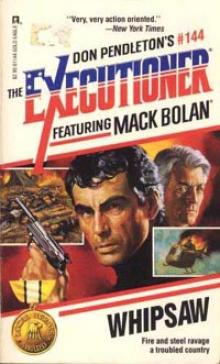 Whipsaw te-144
Whipsaw te-144 Blood Rites
Blood Rites Triangle of Terror
Triangle of Terror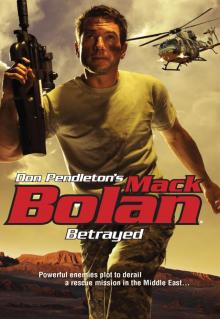 Betrayed
Betrayed San Diego Siege
San Diego Siege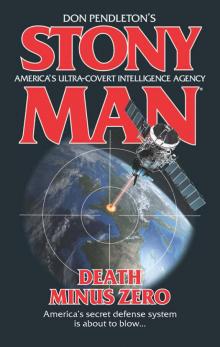 Death Minus Zero
Death Minus Zero Arctic Kill
Arctic Kill Mind to Mind: Ashton Ford, Psychic Detective
Mind to Mind: Ashton Ford, Psychic Detective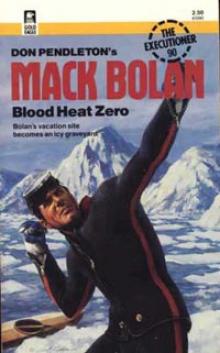 Blood Heat Zero te-90
Blood Heat Zero te-90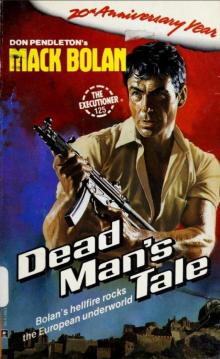 Dead Man's Tale
Dead Man's Tale Sunscream te-85
Sunscream te-85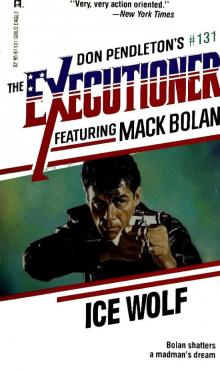 Ice Wolf
Ice Wolf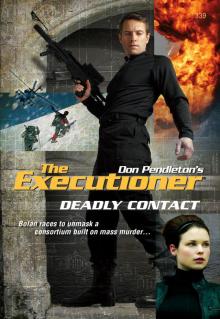 Deadly Contact
Deadly Contact The Cartel Hit
The Cartel Hit Tower of Terror at-1
Tower of Terror at-1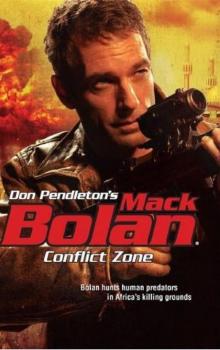 Conflict Zone
Conflict Zone Patriot Strike
Patriot Strike Point Blank
Point Blank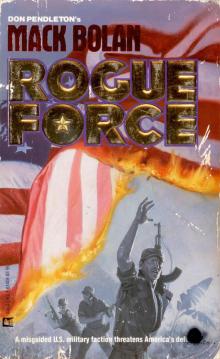 Rogue Force
Rogue Force Patriot Play
Patriot Play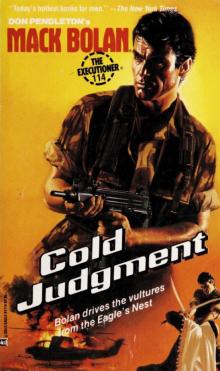 Cold Judgment
Cold Judgment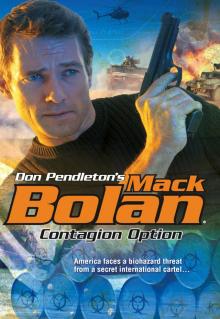 Contagion Option
Contagion Option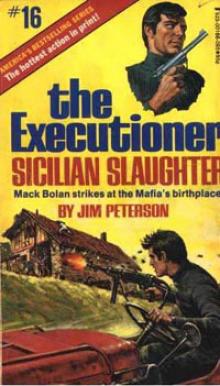 Sicilian Slaughter te-16
Sicilian Slaughter te-16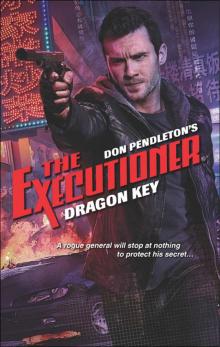 Dragon Key
Dragon Key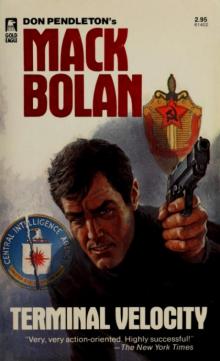 Terminal Velocity
Terminal Velocity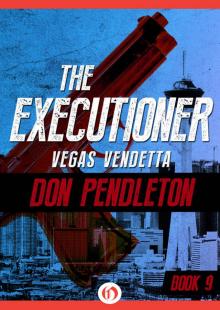 Vegas Vendetta
Vegas Vendetta Ashes To Ashes
Ashes To Ashes Blood of the Lion
Blood of the Lion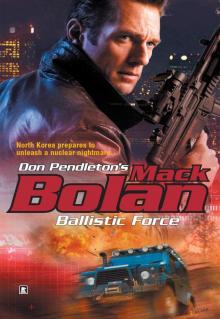 Ballistic Force
Ballistic Force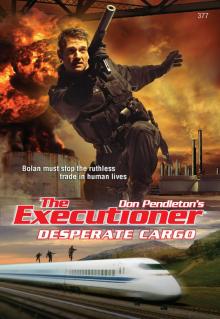 Desperate Cargo
Desperate Cargo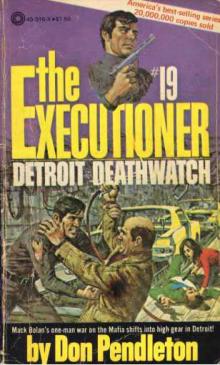 Detroit Deathwatch te-19
Detroit Deathwatch te-19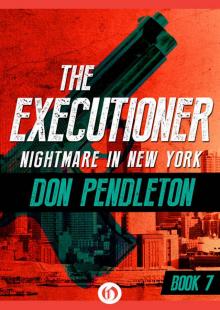 Nightmare in New York
Nightmare in New York Killpath
Killpath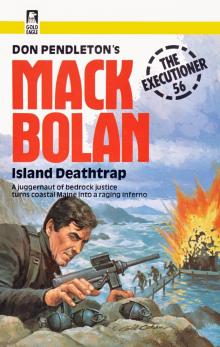 Executioner 056 - Island Deathtrap
Executioner 056 - Island Deathtrap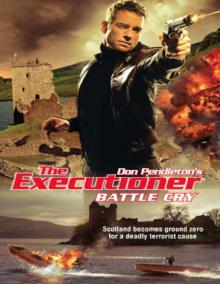 Battle Cry
Battle Cry Don Pendleton - Civil War II
Don Pendleton - Civil War II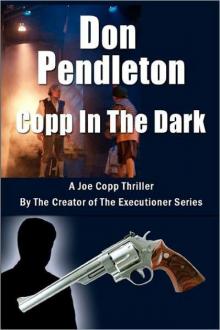 Copp In The Dark, A Joe Copp Thriller (Joe Copp Private Eye Series)
Copp In The Dark, A Joe Copp Thriller (Joe Copp Private Eye Series) China Crisis (Stony Man)
China Crisis (Stony Man) Code of Dishonor
Code of Dishonor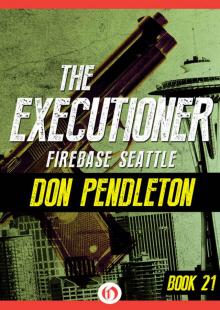 Firebase Seattle
Firebase Seattle Hard Targets
Hard Targets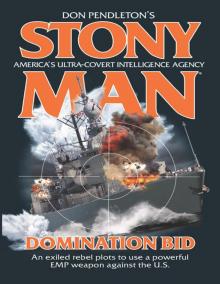 Domination Bid
Domination Bid Kill Squad
Kill Squad Slayground
Slayground Poison Justice
Poison Justice Suicide Highway
Suicide Highway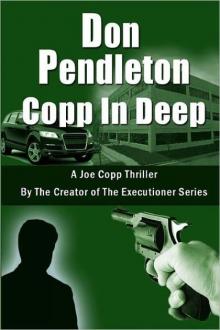 Copp In Deep, A Joe Copp Thriller (Joe Copp Private Eye Series)
Copp In Deep, A Joe Copp Thriller (Joe Copp Private Eye Series)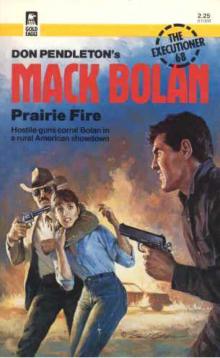 Prairie Fire
Prairie Fire Ninja Assault
Ninja Assault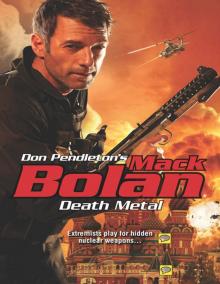 Death Metal
Death Metal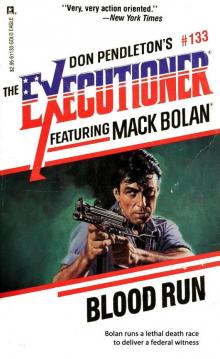 Blood Run
Blood Run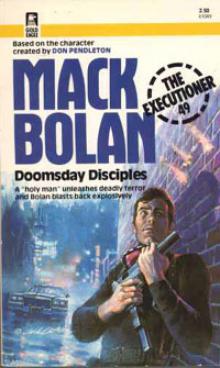 Doomsday Disciples te-49
Doomsday Disciples te-49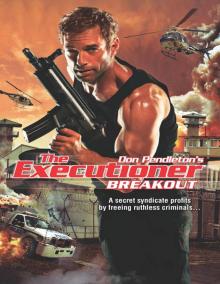 Breakout
Breakout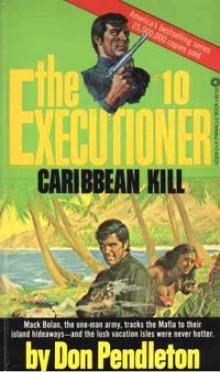 Caribbean Kill te-10
Caribbean Kill te-10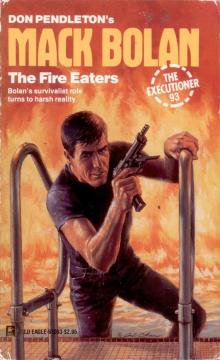 Fire Eaters
Fire Eaters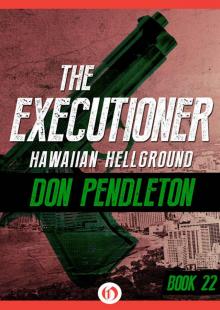 Hawaiian Hellground
Hawaiian Hellground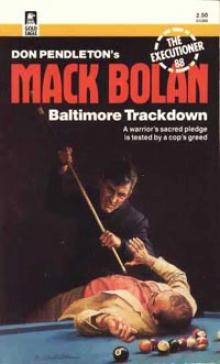 Baltimore Trackdown te-88
Baltimore Trackdown te-88 Threat Factor
Threat Factor Don Pendleton's Science Fiction Collection, 3 Books Box Set, (The Guns of Terra 10; The Godmakers; The Olympians)
Don Pendleton's Science Fiction Collection, 3 Books Box Set, (The Guns of Terra 10; The Godmakers; The Olympians)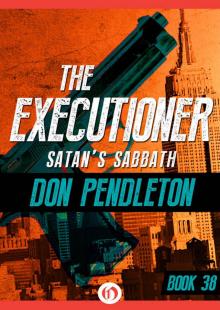 Satan’s Sabbath
Satan’s Sabbath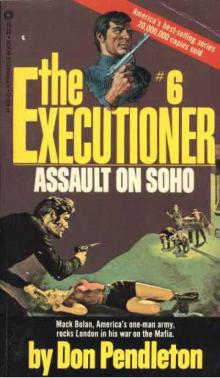 Assault on Soho te-6
Assault on Soho te-6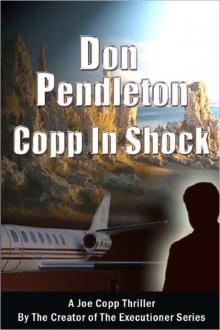 Copp In Shock, A Joe Copp Thriller (Joe Copp Private Eye Series)
Copp In Shock, A Joe Copp Thriller (Joe Copp Private Eye Series)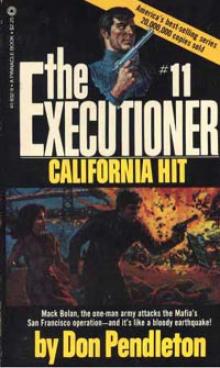 California Hit te-11
California Hit te-11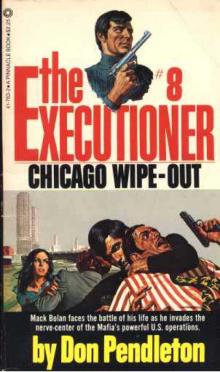 Chicago Wipe-Out te-8
Chicago Wipe-Out te-8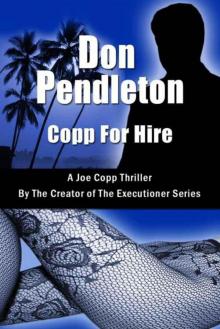 Copp For Hire, A Joe Copp Thriller (Joe Copp Private Eye Series)
Copp For Hire, A Joe Copp Thriller (Joe Copp Private Eye Series) Point Position
Point Position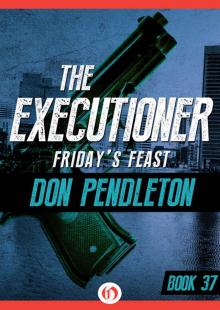 Friday’s Feast
Friday’s Feast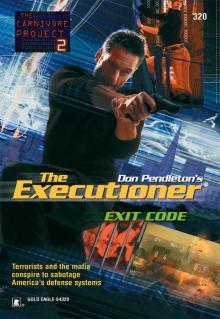 Exit Code
Exit Code Night's Reckoning
Night's Reckoning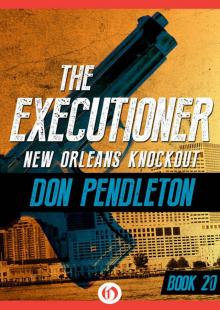 New Orleans Knockout
New Orleans Knockout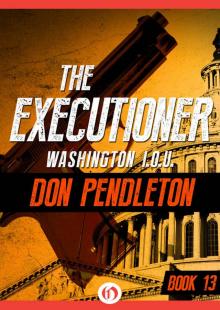 Washington I.O.U.
Washington I.O.U.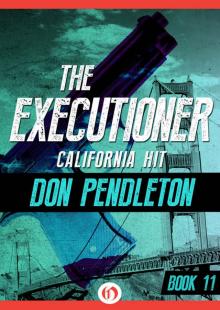 California Hit
California Hit Blood Vendetta
Blood Vendetta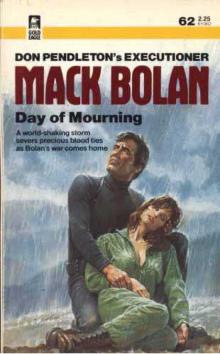 Day of Mourning te-62
Day of Mourning te-62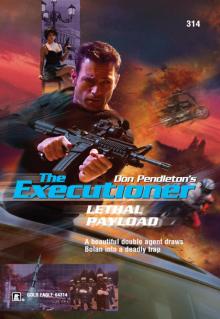 Lethal Payload
Lethal Payload Boston Blitz
Boston Blitz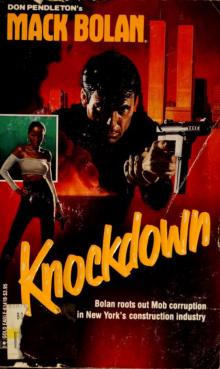 Knockdown
Knockdown Blood Sport te-46
Blood Sport te-46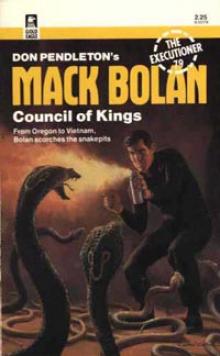 Council of Kings te-79
Council of Kings te-79 Terrorist Dispatch (Executioner)
Terrorist Dispatch (Executioner)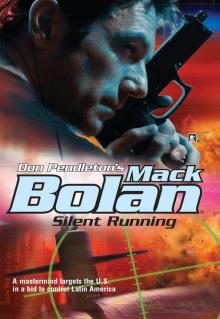 Silent Running
Silent Running Death Squad
Death Squad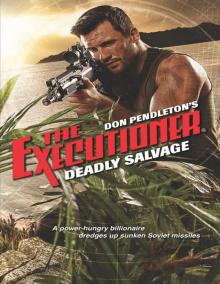 Deadly Salvage
Deadly Salvage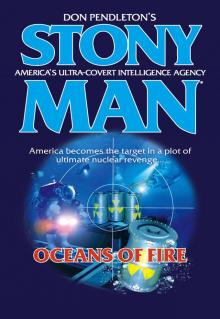 Oceans of Fire
Oceans of Fire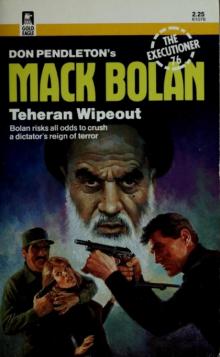 Teheran Wipeout
Teheran Wipeout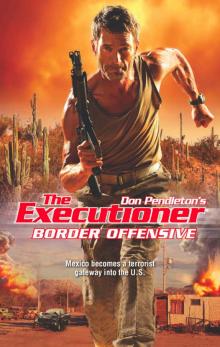 Border Offensive
Border Offensive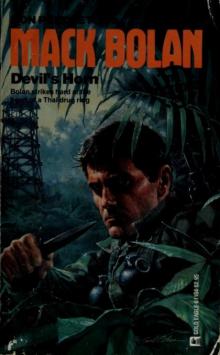 Devil's Horn
Devil's Horn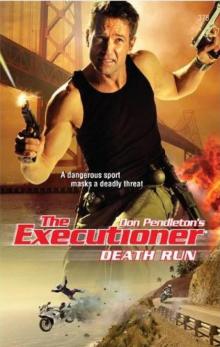 Death Run
Death Run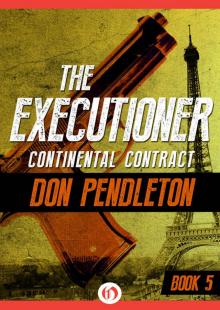 Continental Contract
Continental Contract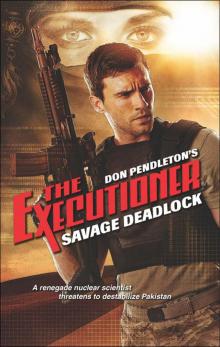 Savage Deadlock
Savage Deadlock Eye to Eye: Ashton Ford, Psychic Detective
Eye to Eye: Ashton Ford, Psychic Detective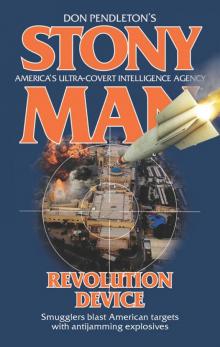 Revolution Device
Revolution Device Heart to Heart: Ashton Ford, Psychic Detective
Heart to Heart: Ashton Ford, Psychic Detective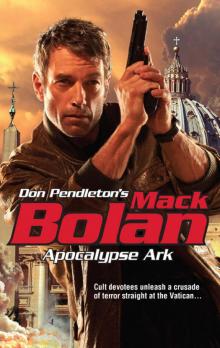 Apocalypse Ark
Apocalypse Ark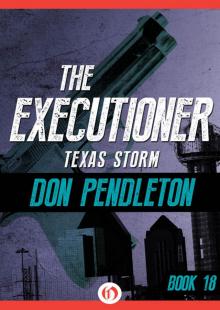 Texas Storm
Texas Storm Maximum Chaos
Maximum Chaos Sensor Sweep
Sensor Sweep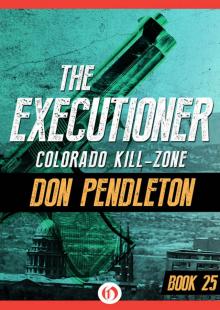 Colorado Kill-Zone
Colorado Kill-Zone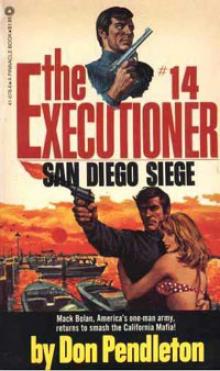 San Diego Siege te-14
San Diego Siege te-14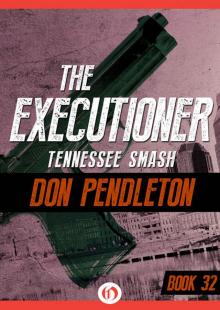 Tennessee Smash
Tennessee Smash Desert Impact
Desert Impact Fire in the Sky
Fire in the Sky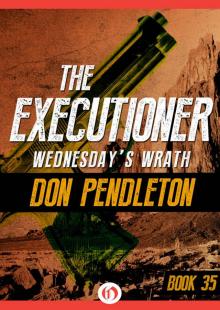 Wednesday’s Wrath
Wednesday’s Wrath Super Bolan - 001 - Stony Man Doctrine
Super Bolan - 001 - Stony Man Doctrine Chain Reaction
Chain Reaction Pacific Creed
Pacific Creed Death List
Death List Rebel Force
Rebel Force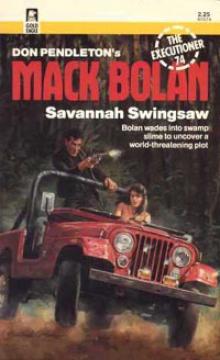 Savannah Swingsaw te-74
Savannah Swingsaw te-74 Heart to Heart
Heart to Heart Shadow Search
Shadow Search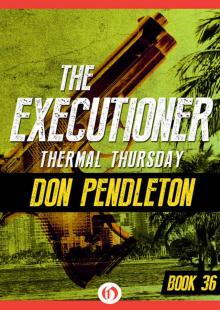 Thermal Thursday
Thermal Thursday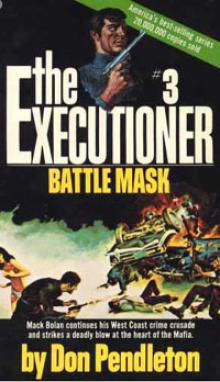 Battle Mask te-3
Battle Mask te-3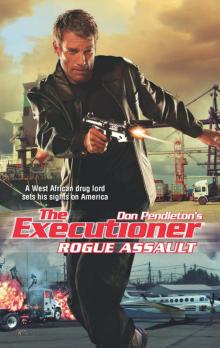 Rogue Assault
Rogue Assault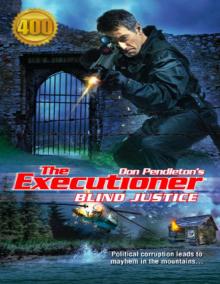 Blind Justice
Blind Justice Cold Fusion
Cold Fusion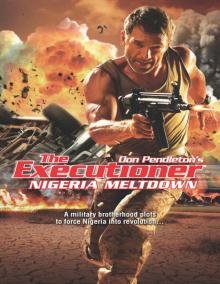 Nigeria Meltdown
Nigeria Meltdown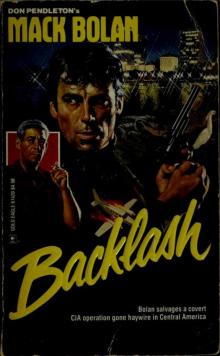 Backlash
Backlash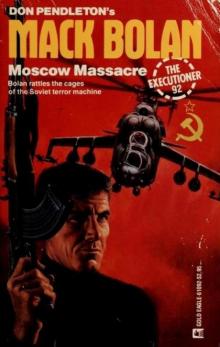 Moscow Massacre
Moscow Massacre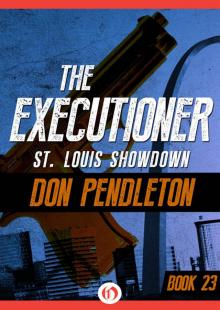 St. Louis Showdown
St. Louis Showdown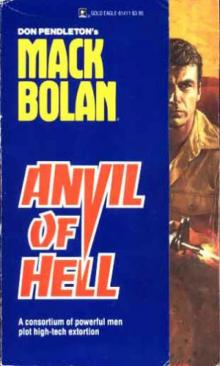 Anvil of Hell
Anvil of Hell Life to Life: Ashton Ford, Psychic Detective
Life to Life: Ashton Ford, Psychic Detective Amazon Impunity
Amazon Impunity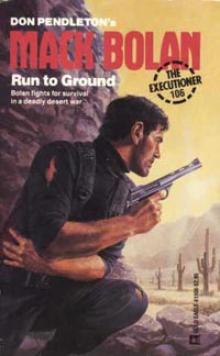 Run to Ground te-106
Run to Ground te-106 Save the Children te-94
Save the Children te-94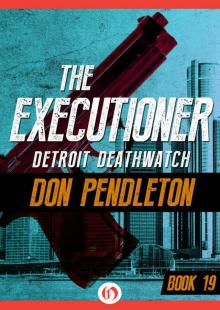 Detroit Deathwatch
Detroit Deathwatch Shadow Hunt
Shadow Hunt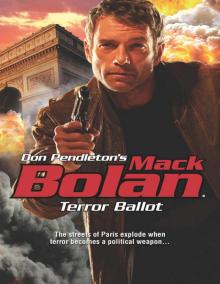 Terror Ballot
Terror Ballot Stand Down
Stand Down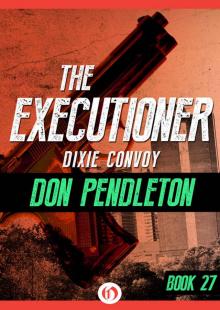 Dixie Convoy
Dixie Convoy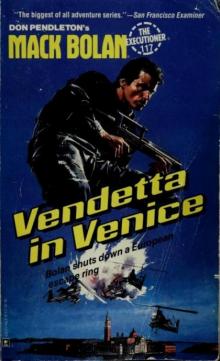 Vendetta in Venice
Vendetta in Venice War Against the Mafia
War Against the Mafia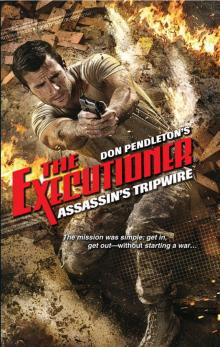 Assassin's Tripwire
Assassin's Tripwire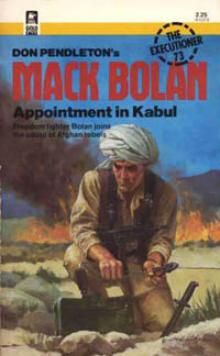 Appointment in Kabul te-73
Appointment in Kabul te-73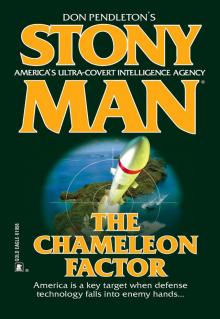 The Chameleon Factor
The Chameleon Factor Pirate Offensive
Pirate Offensive Prison Code
Prison Code Firebase Seattle te-21
Firebase Seattle te-21 Ground Zero
Ground Zero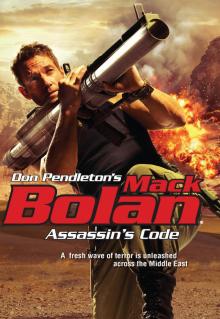 Assassin's Code
Assassin's Code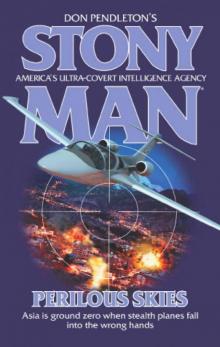 Perilous Skies (Stony Man)
Perilous Skies (Stony Man) Toxic Terrain
Toxic Terrain Canadian Crisis
Canadian Crisis Executioner 057 - Flesh Wounds
Executioner 057 - Flesh Wounds Uncut Terror
Uncut Terror War Everlasting (Superbolan)
War Everlasting (Superbolan)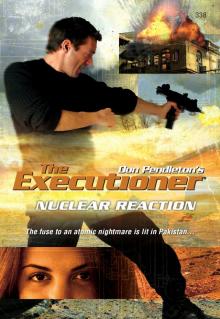 Nuclear Reaction
Nuclear Reaction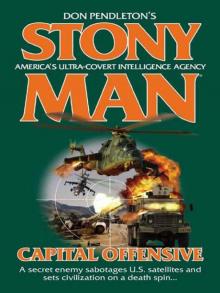 Capital Offensive (Stony Man)
Capital Offensive (Stony Man) Beirut Payback te-67
Beirut Payback te-67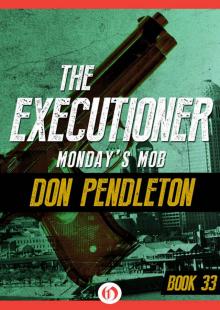 Monday’s Mob
Monday’s Mob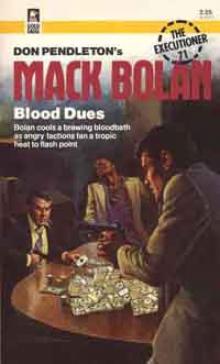 Blood Dues te-71
Blood Dues te-71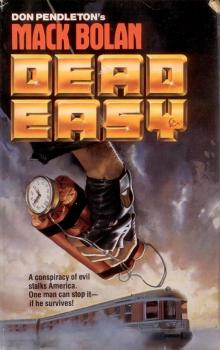 Dead Easy
Dead Easy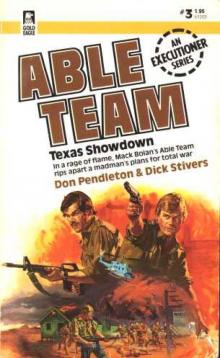 Texas Showdown at-3
Texas Showdown at-3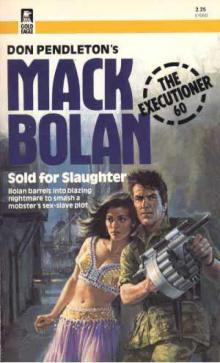 Sold for Slaughter
Sold for Slaughter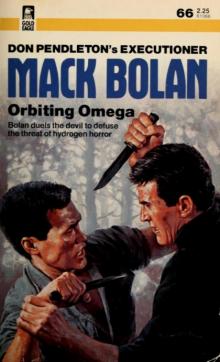 Orbiting Omega
Orbiting Omega Copp On Ice, A Joe Copp Thriller (Joe Copp Private Eye Series)
Copp On Ice, A Joe Copp Thriller (Joe Copp Private Eye Series) Rebel Blast
Rebel Blast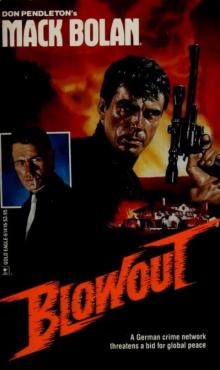 Blowout
Blowout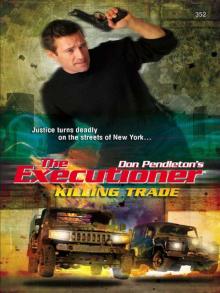 Killing Trade
Killing Trade Assault on Soho
Assault on Soho Season of Slaughter
Season of Slaughter Collision Course
Collision Course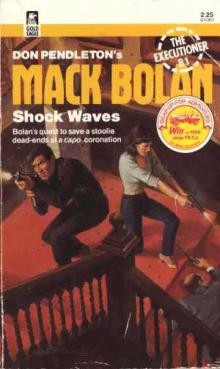 Shock Waves
Shock Waves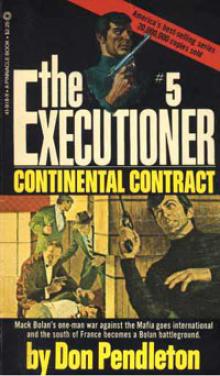 Continental Contract te-5
Continental Contract te-5 Dead Reckoning
Dead Reckoning Enemies Within
Enemies Within Agent of Peril
Agent of Peril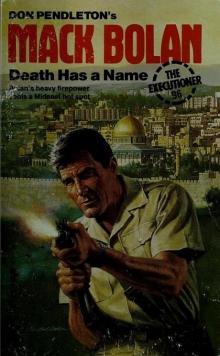 Death Has a Name
Death Has a Name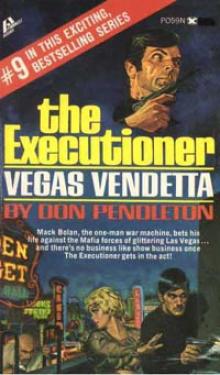 Vegas Vendetta te-9
Vegas Vendetta te-9 The Fiery Cross
The Fiery Cross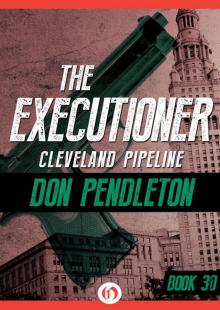 Cleveland Pipeline
Cleveland Pipeline Armed Response
Armed Response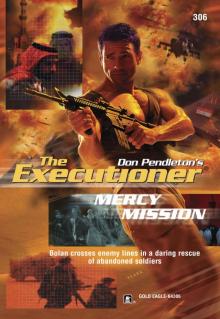 Mercy Mission
Mercy Mission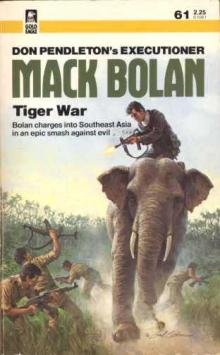 Tiger War te-61
Tiger War te-61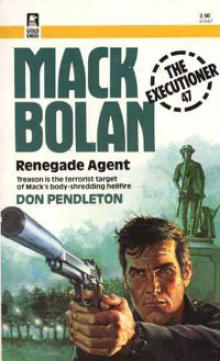 Renegade Agent te-47
Renegade Agent te-47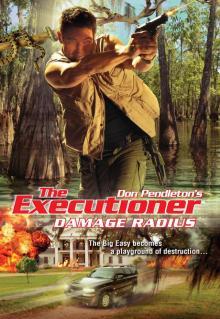 Damage Radius
Damage Radius Eye to Eye
Eye to Eye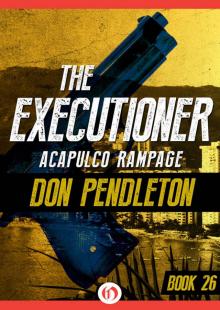 Acapulco Rampage
Acapulco Rampage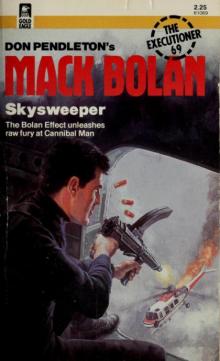 Skysweeper
Skysweeper The Iranian Hit te-42
The Iranian Hit te-42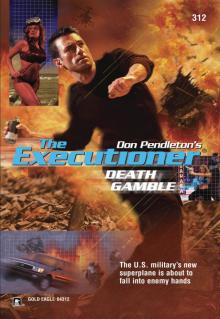 Death Gamble
Death Gamble Rebel Trade
Rebel Trade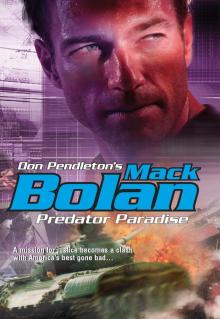 Predator Paradise
Predator Paradise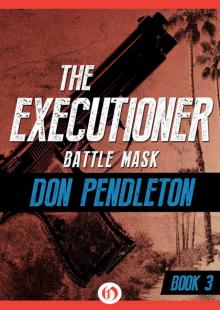 Battle Mask
Battle Mask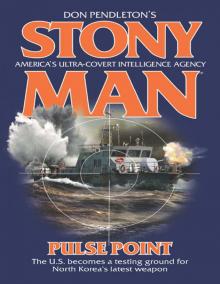 Pulse Point
Pulse Point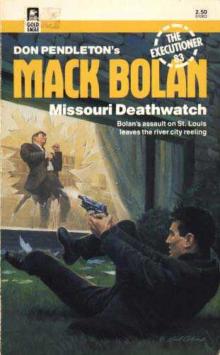 Missouri Deathwatch
Missouri Deathwatch Blood Tide
Blood Tide Missile Intercept
Missile Intercept Jersey Guns
Jersey Guns Hostile Force
Hostile Force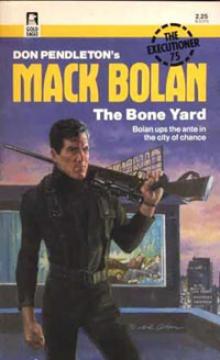 The Bone Yard te-75
The Bone Yard te-75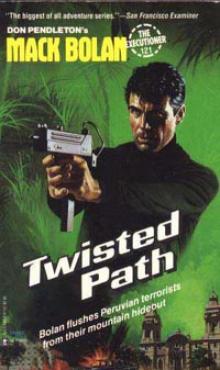 Twisted Path te-121
Twisted Path te-121 Mind to Mind
Mind to Mind Copp On Fire, A Joe Copp Thriller (Joe Copp, Private Eye Series)
Copp On Fire, A Joe Copp Thriller (Joe Copp, Private Eye Series)